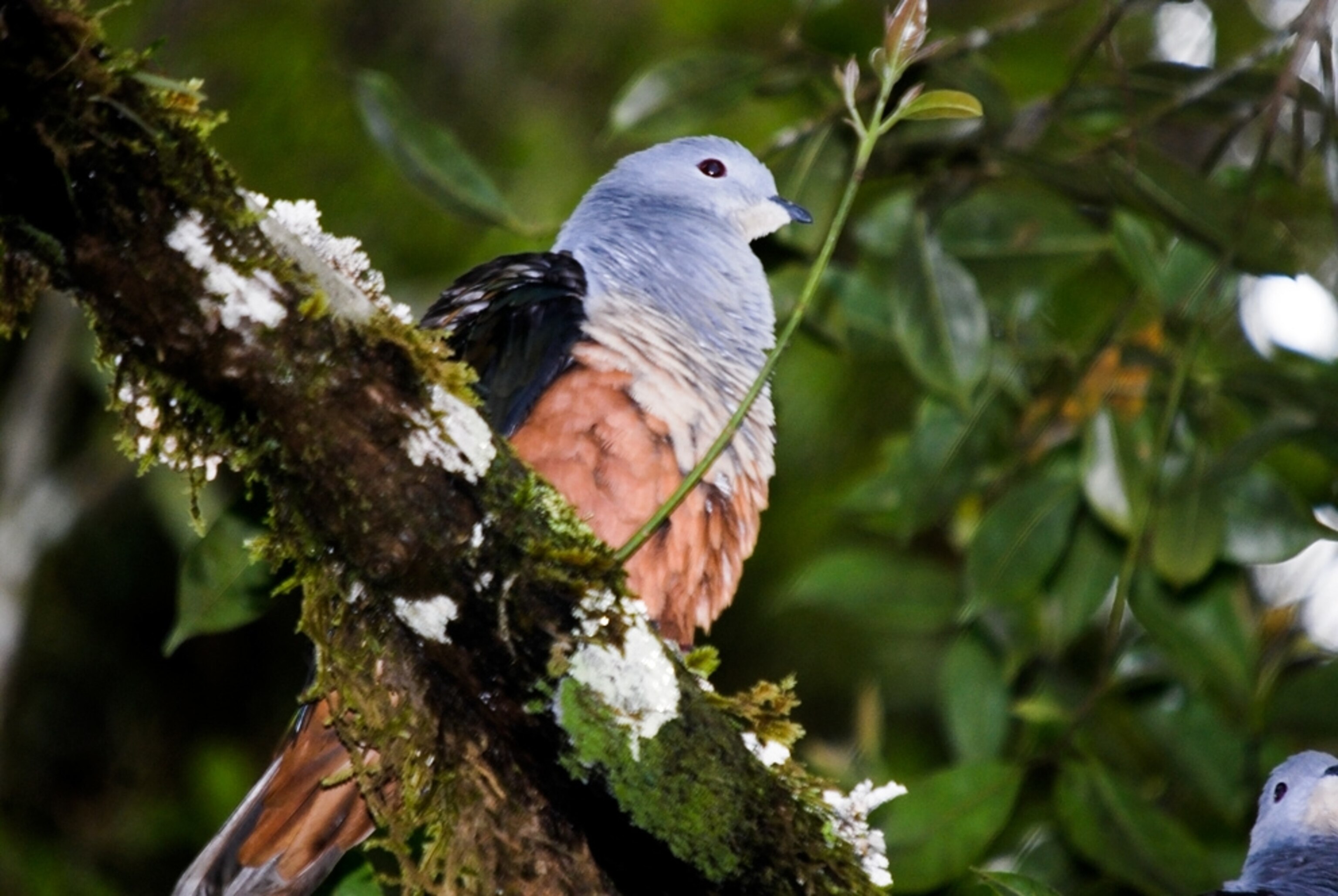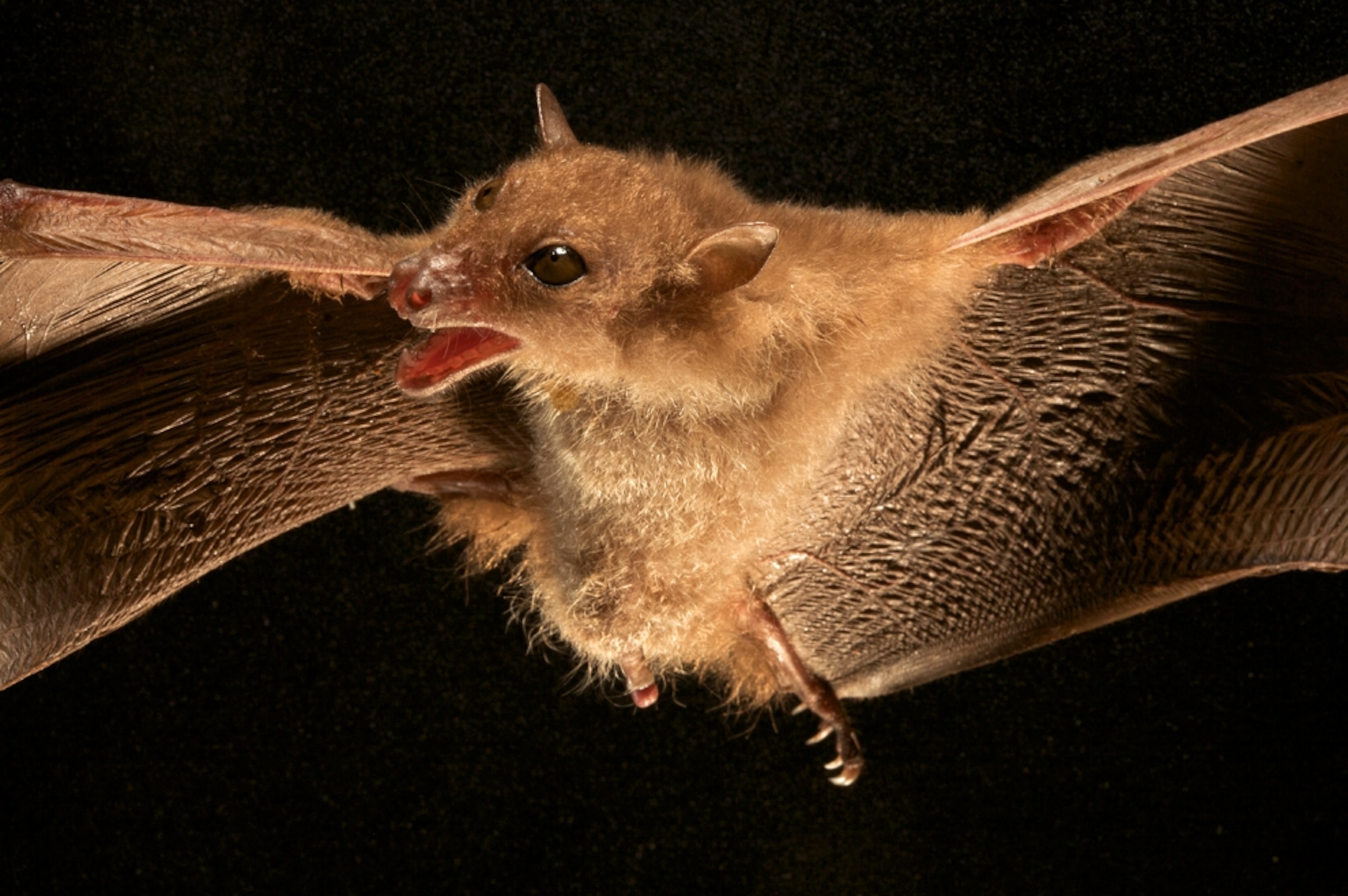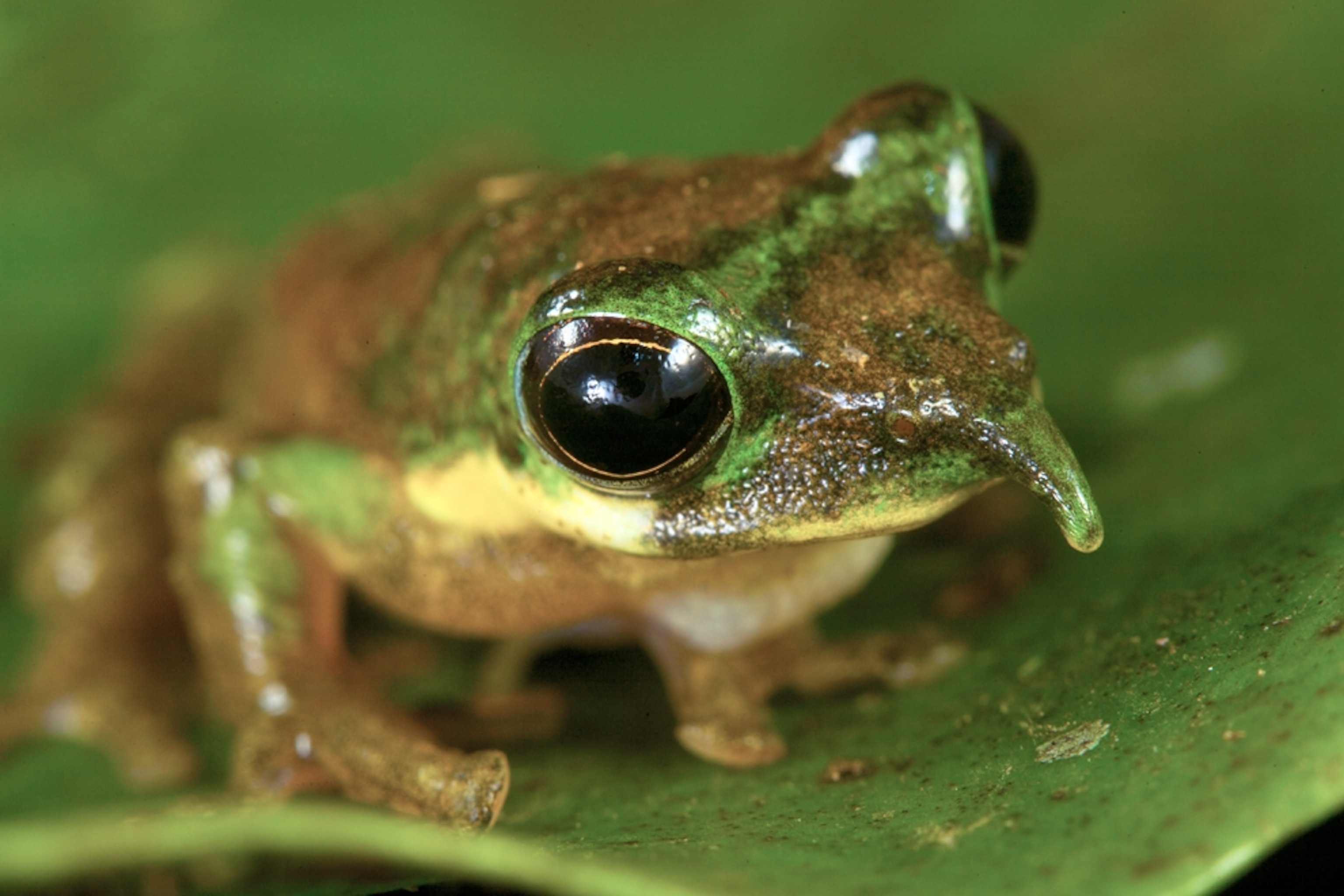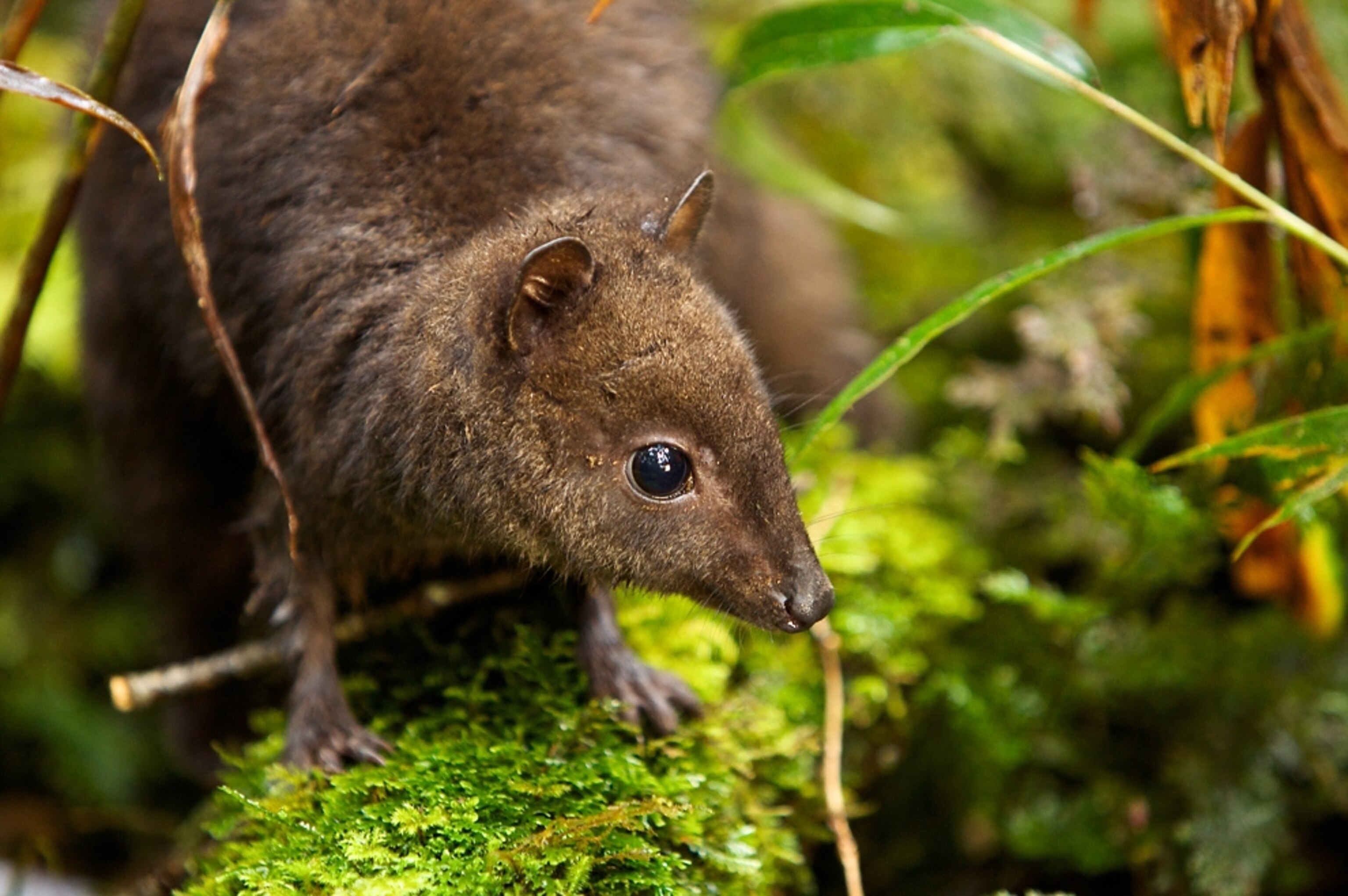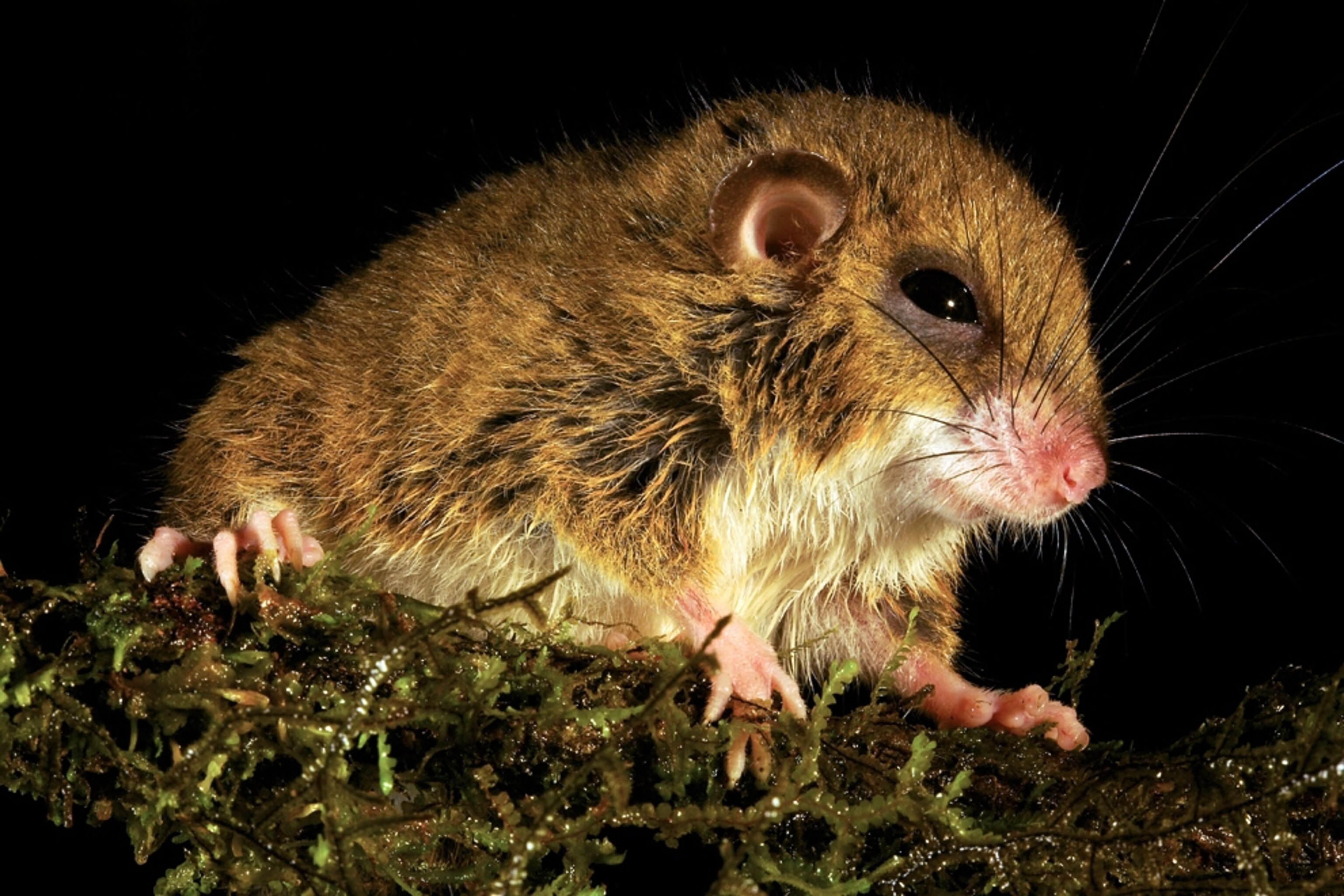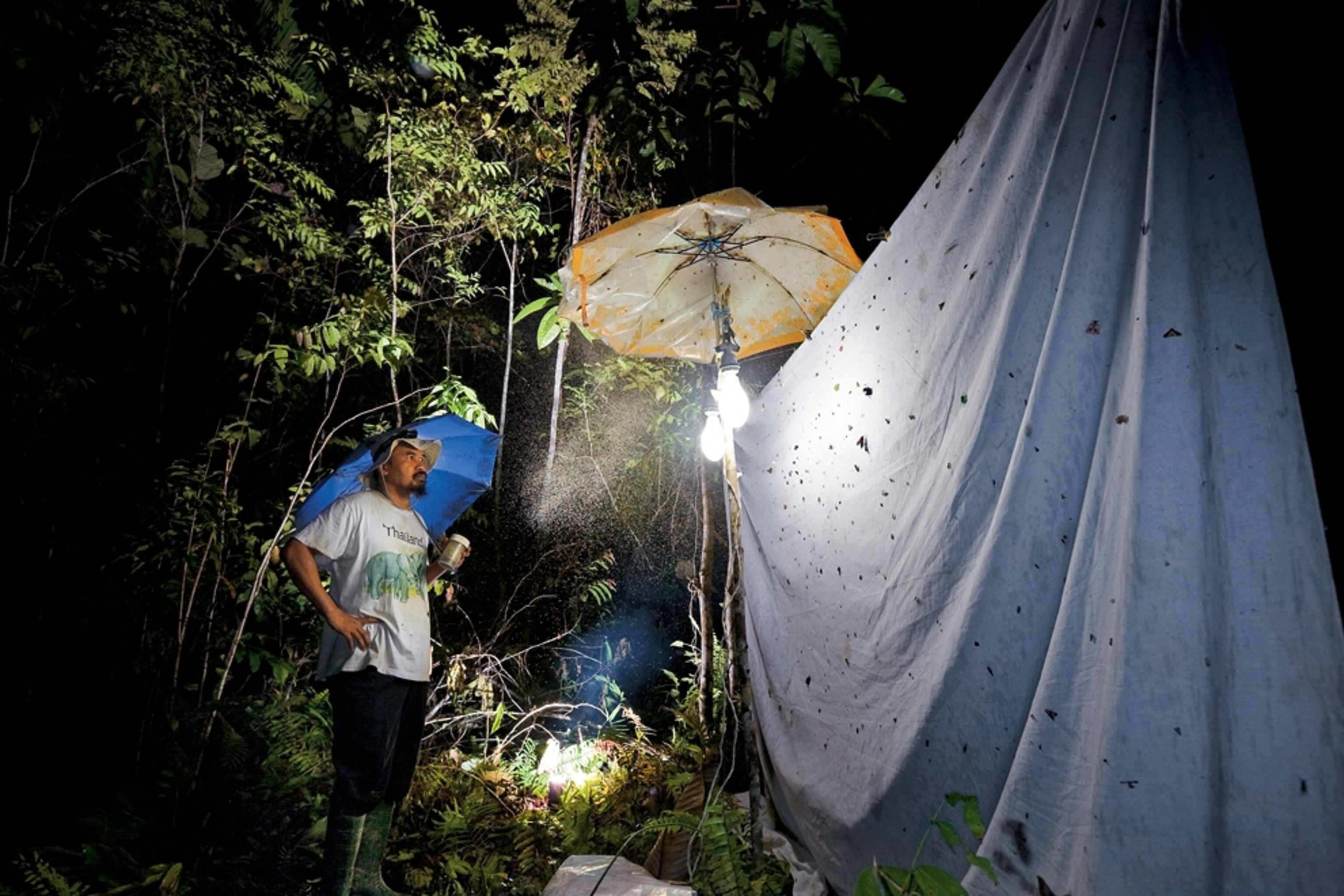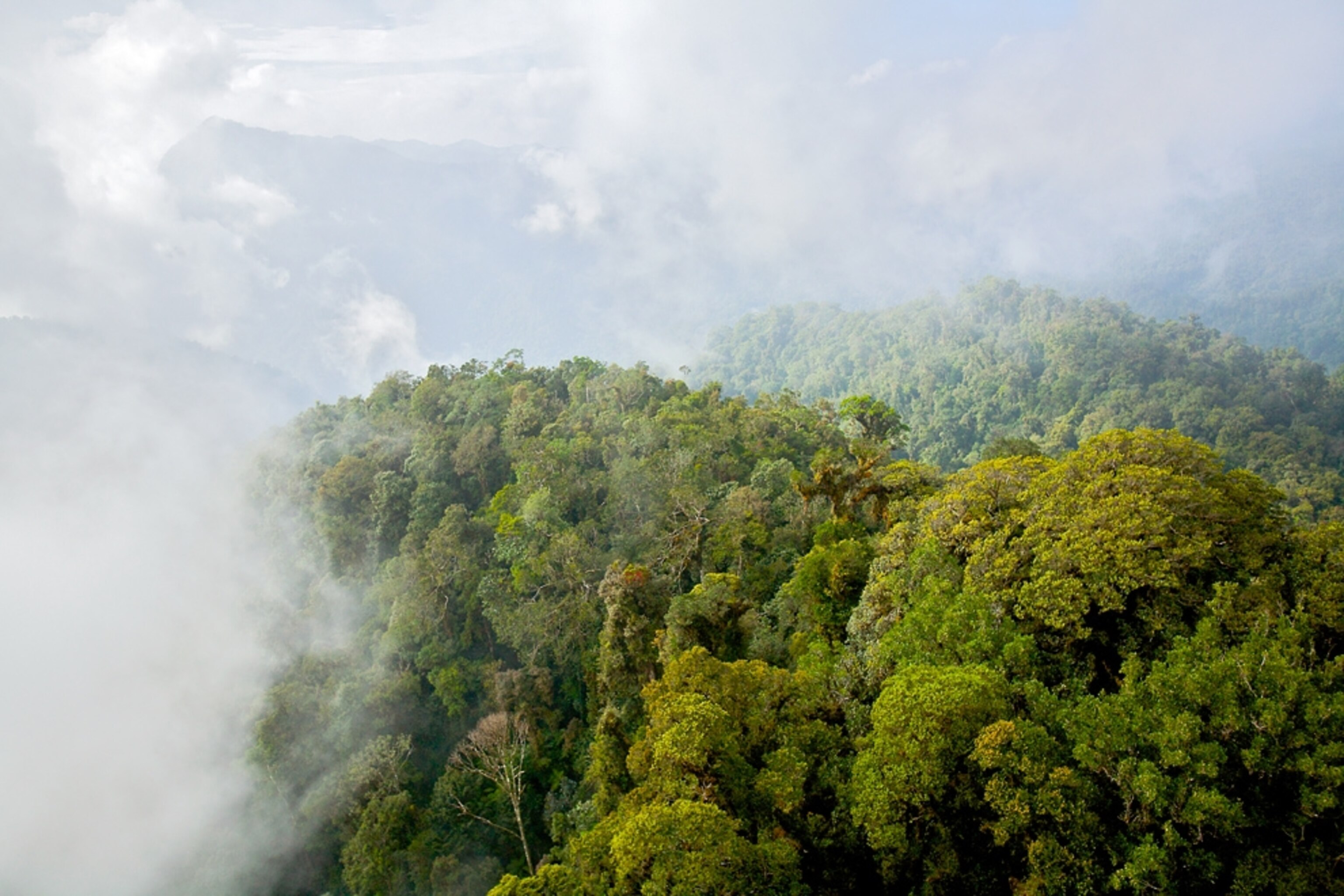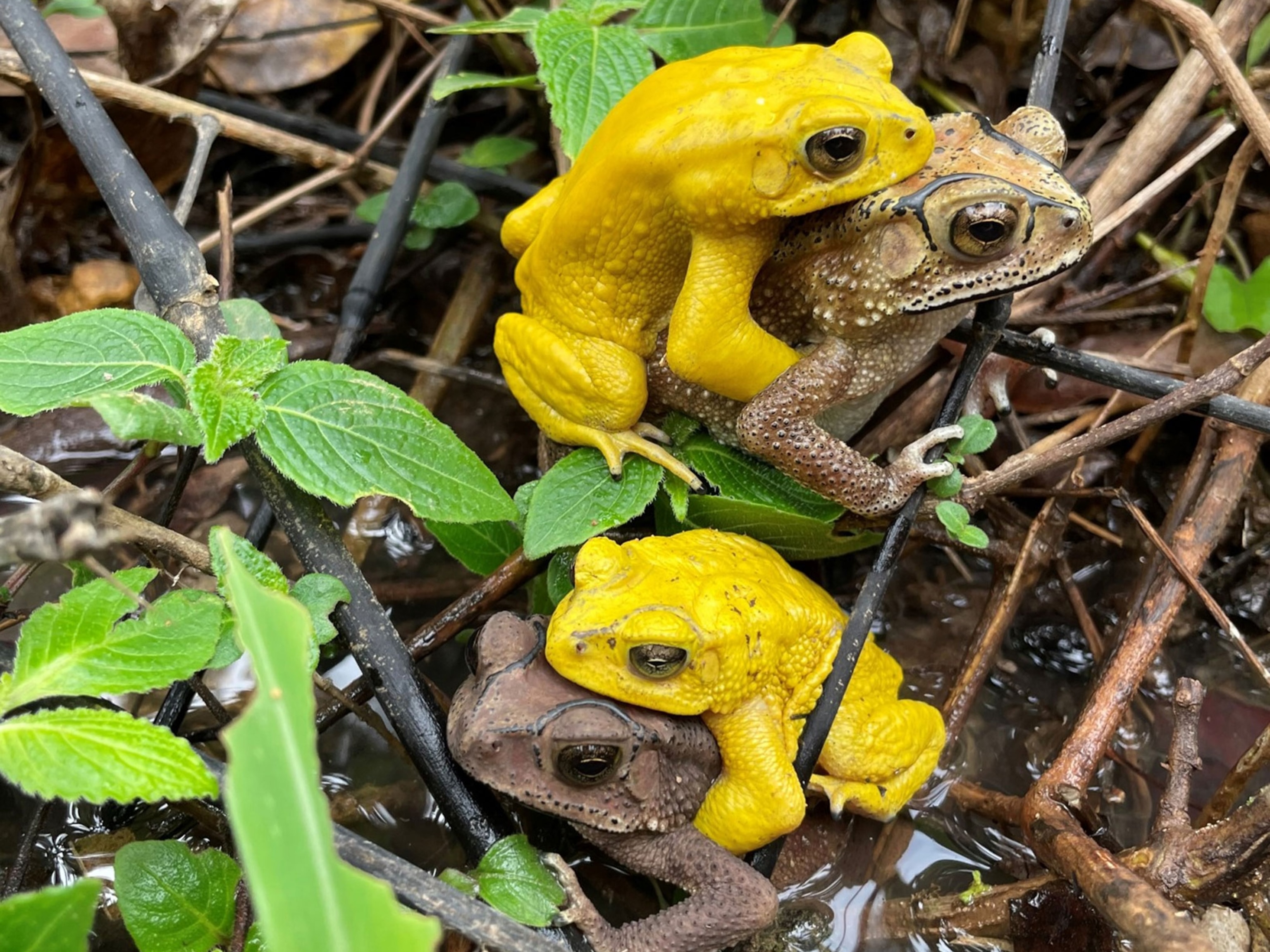1 of 8
Photograph courtesy Neville Kemp
New Species Found in "Lost World": Pinocchio Frog, More
See the active-nosed "Pinocchio frog," the world's smallest wallaby, and other new species found in the tropical mountains called the Lost World.
May 18, 2010
